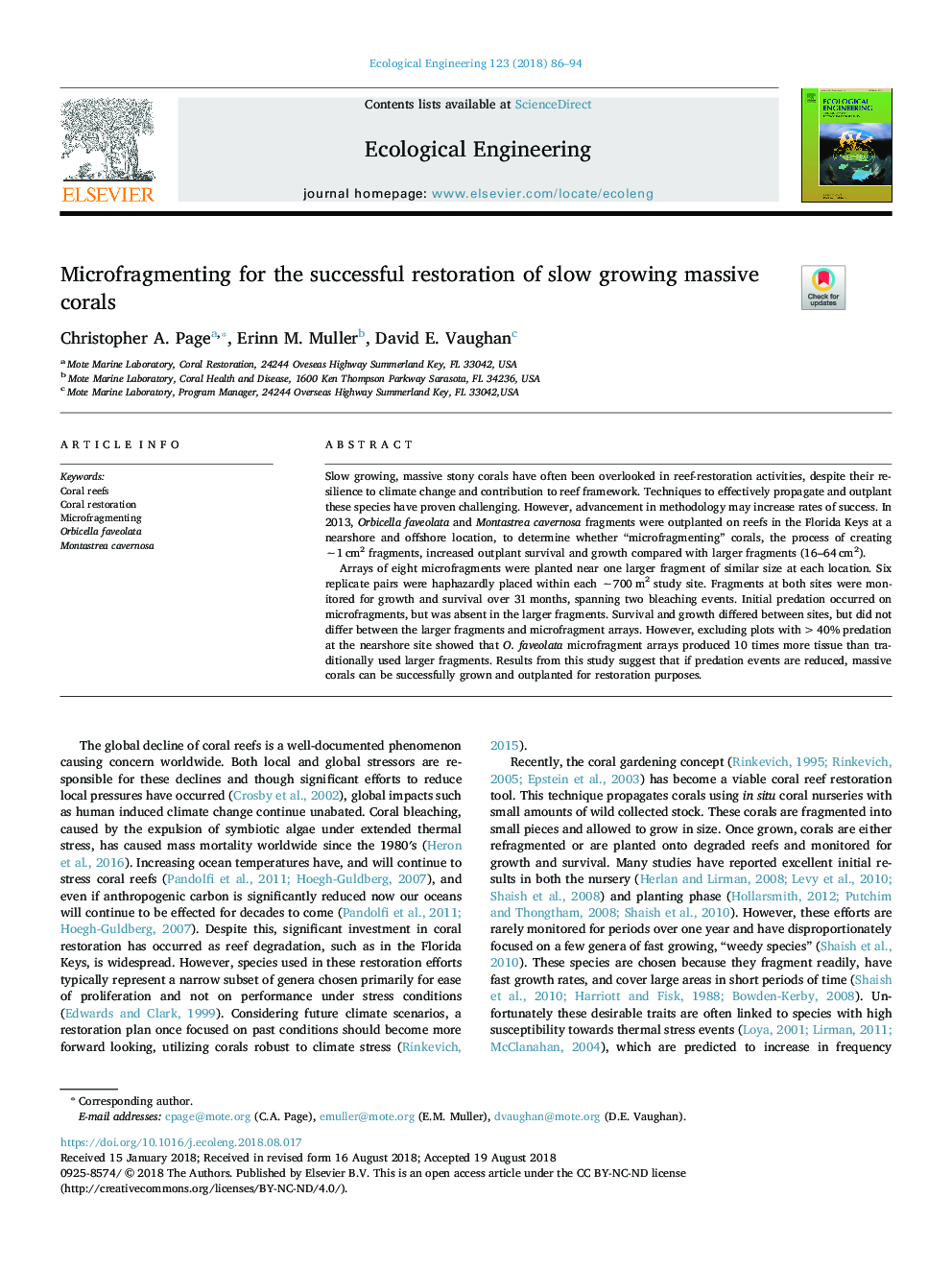| Article ID | Journal | Published Year | Pages | File Type |
|---|---|---|---|---|
| 10144345 | Ecological Engineering | 2018 | 9 Pages |
Abstract
Arrays of eight microfragments were planted near one larger fragment of similar size at each location. Six replicate pairs were haphazardly placed within each â¼700â¯m2 study site. Fragments at both sites were monitored for growth and survival over 31â¯months, spanning two bleaching events. Initial predation occurred on microfragments, but was absent in the larger fragments. Survival and growth differed between sites, but did not differ between the larger fragments and microfragment arrays. However, excluding plots with >40% predation at the nearshore site showed that O. faveolata microfragment arrays produced 10 times more tissue than traditionally used larger fragments. Results from this study suggest that if predation events are reduced, massive corals can be successfully grown and outplanted for restoration purposes.
Keywords
Related Topics
Life Sciences
Agricultural and Biological Sciences
Ecology, Evolution, Behavior and Systematics
Authors
Christopher A. Page, Erinn M. Muller, David E. Vaughan,
